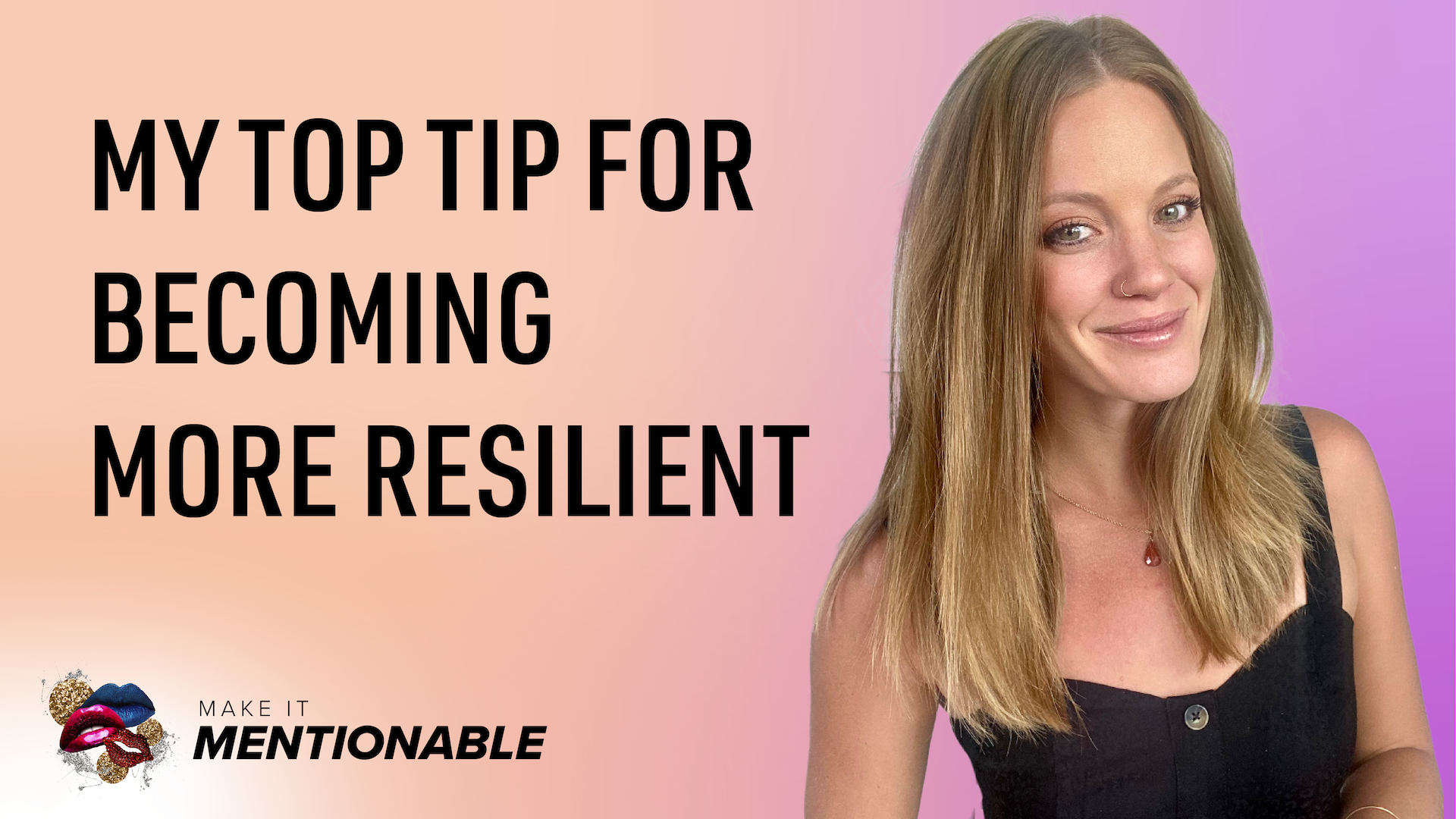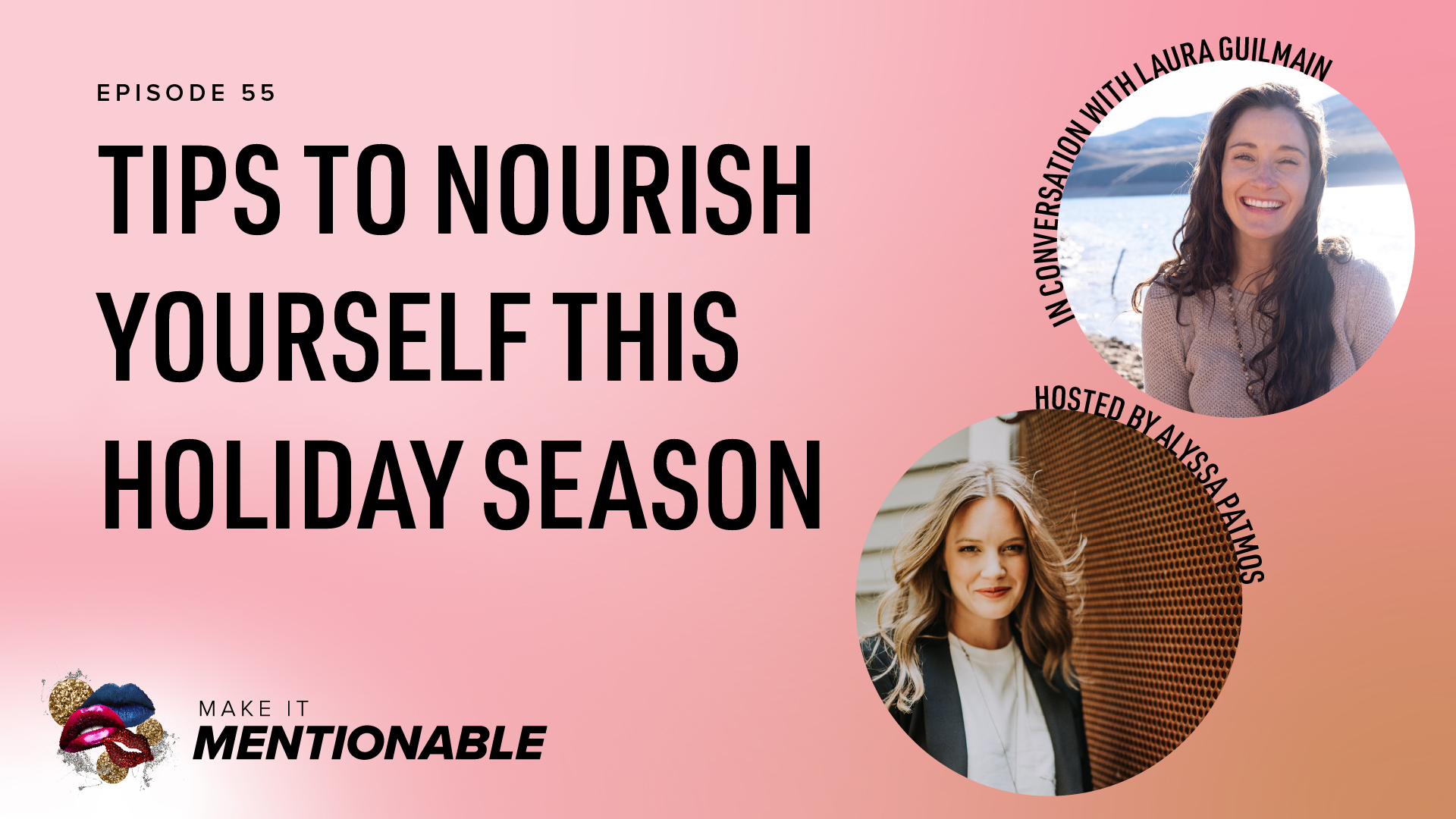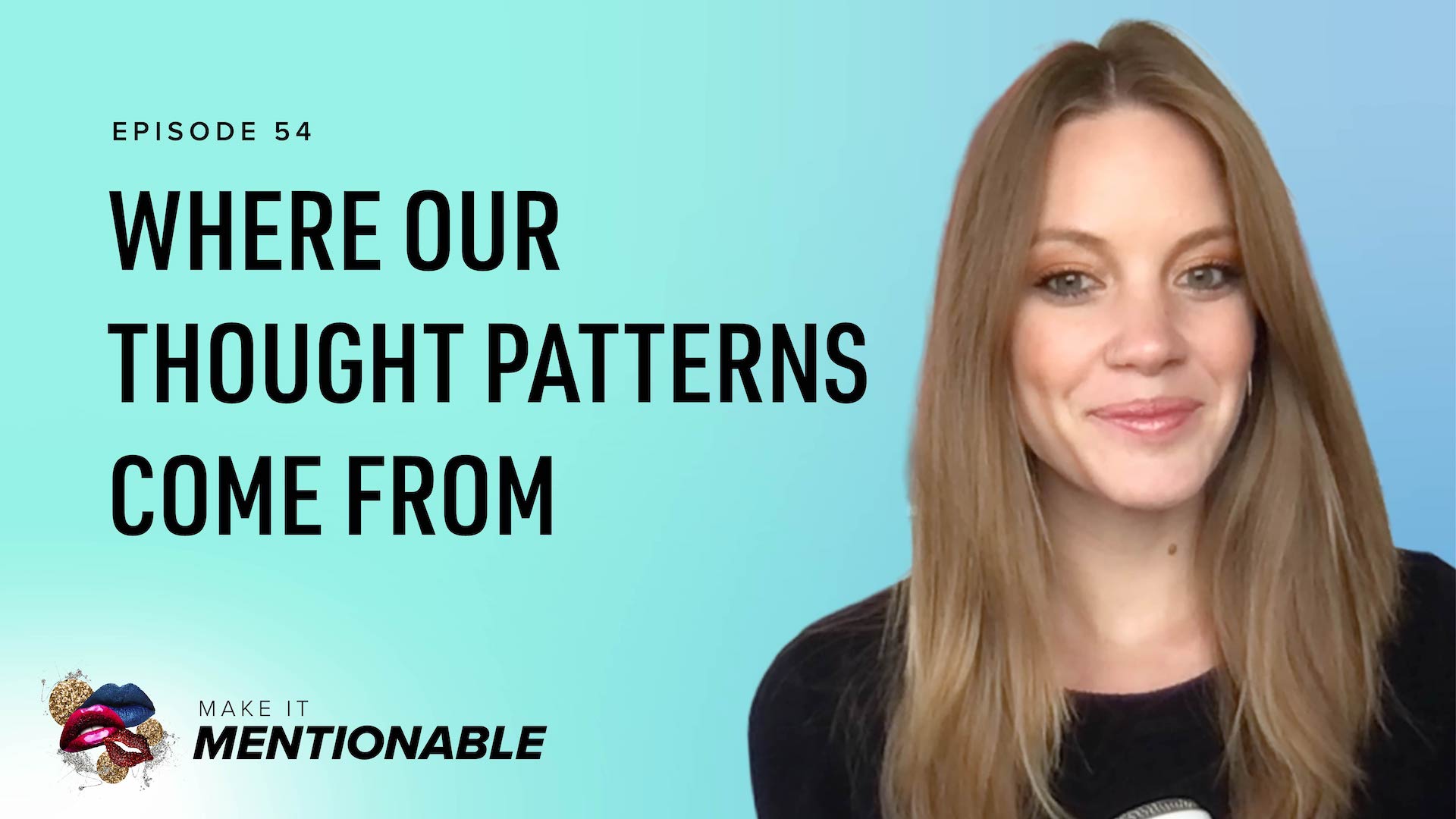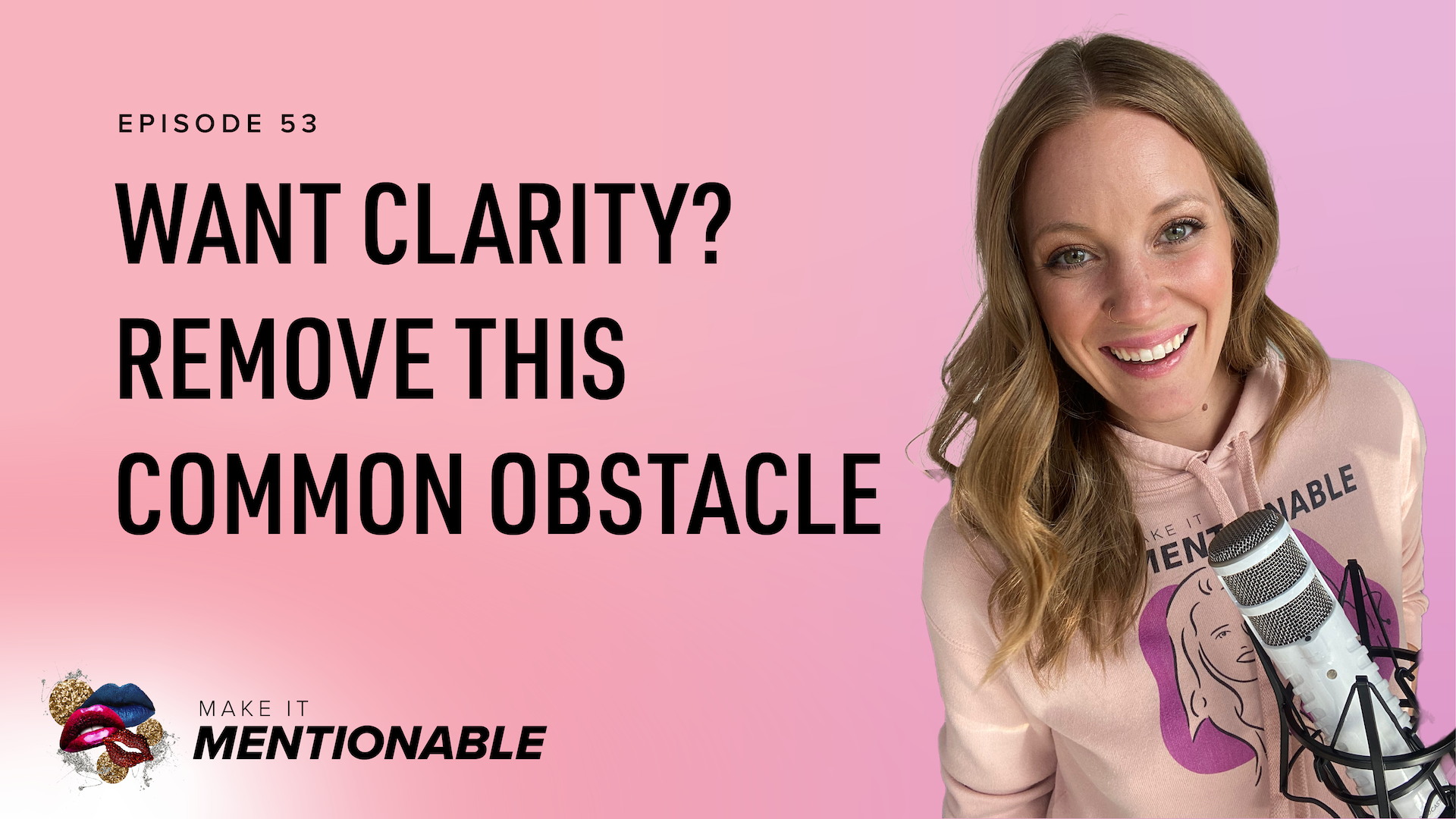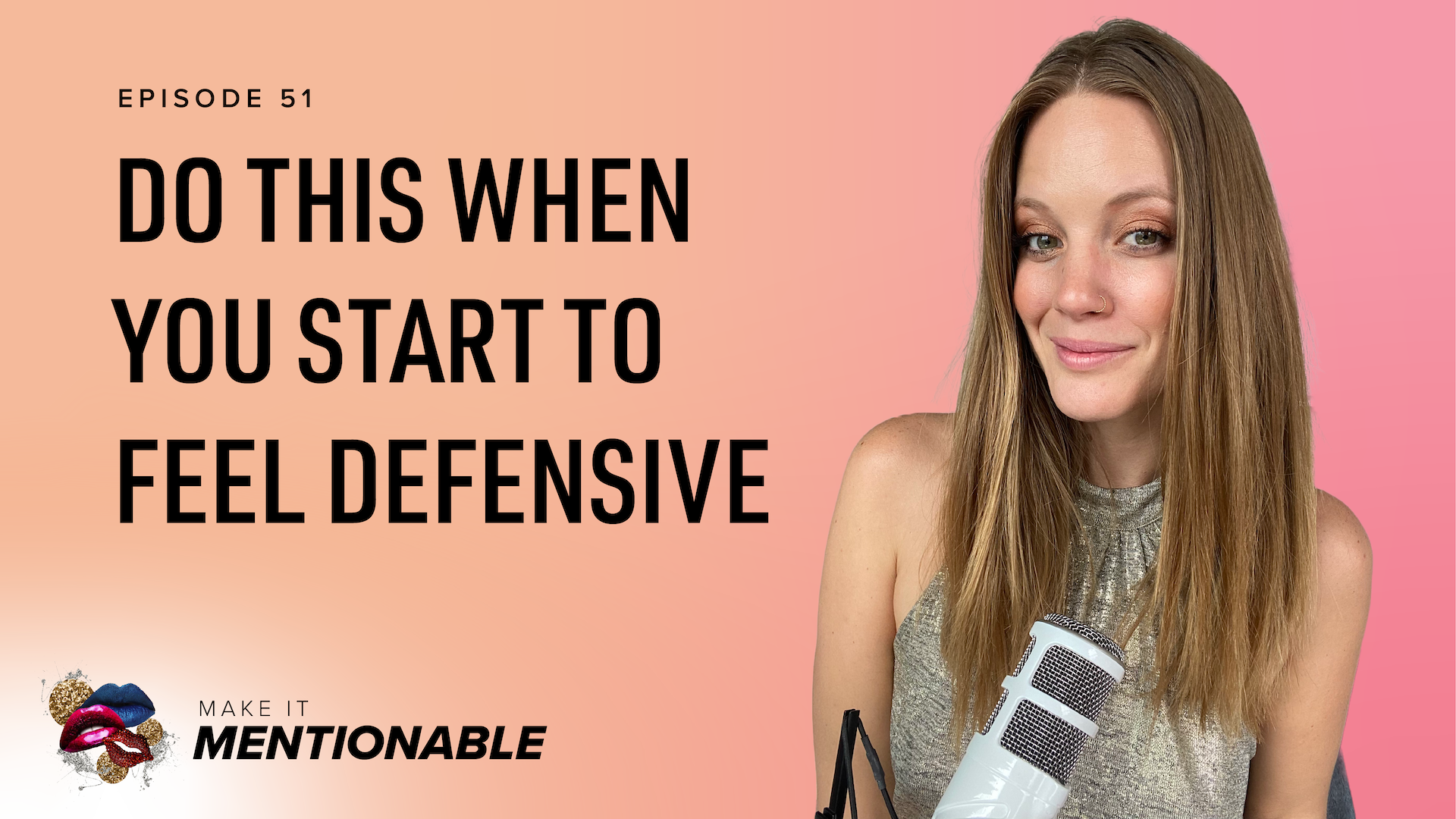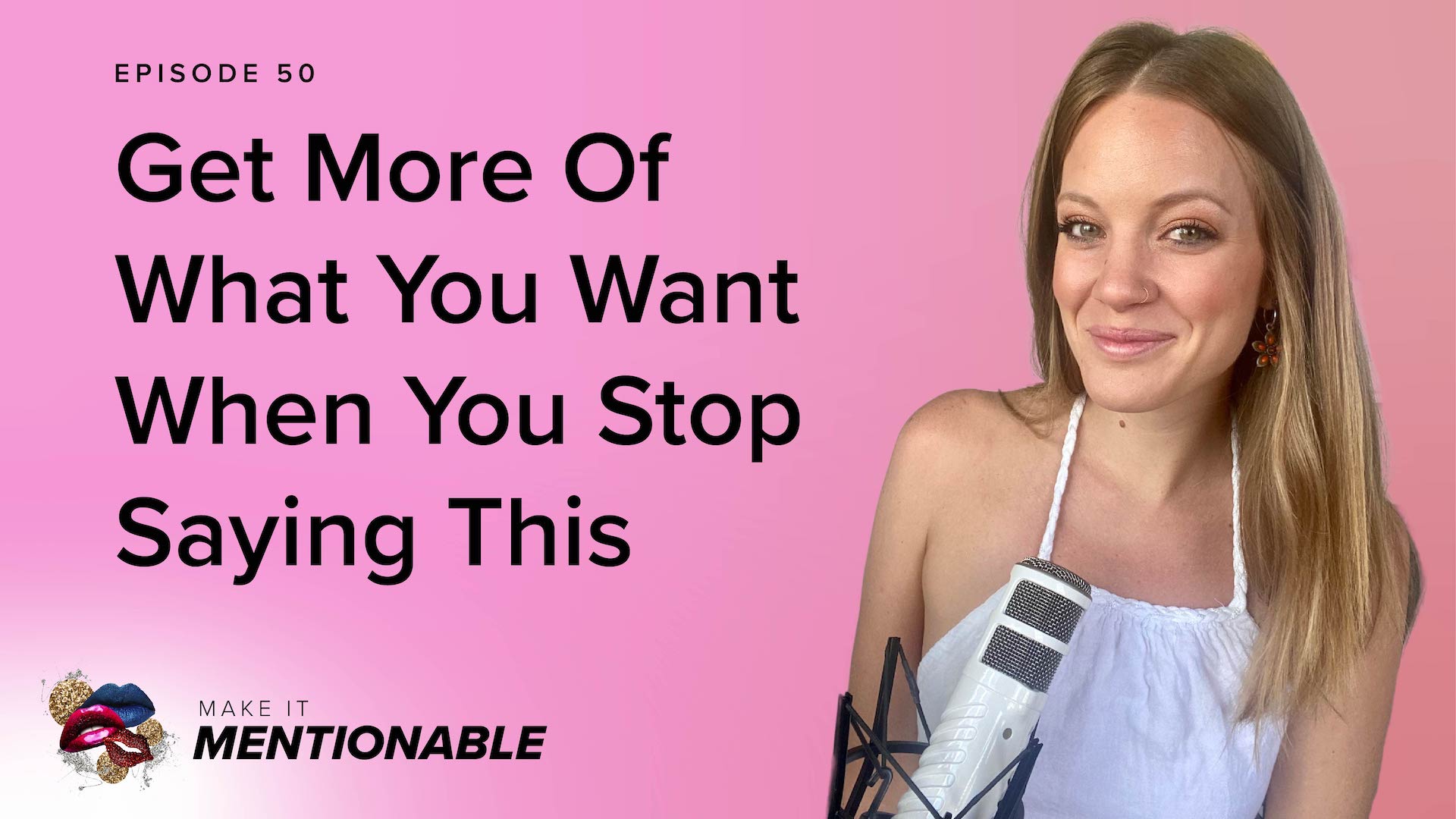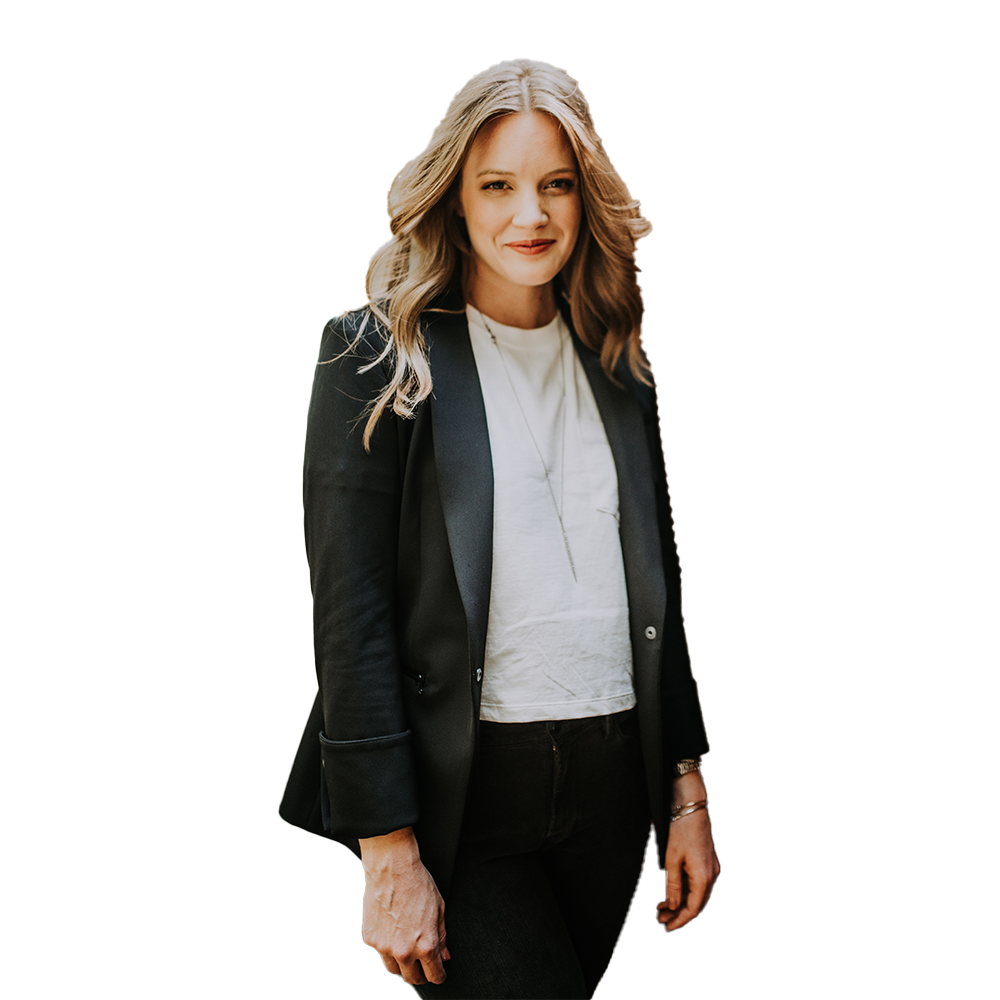Alyssa Patmos 0:04
This is Make It Mentionable. I’m Alyssa Patmos and this is the show about being human in a world that encourages us to be robots.
I invite you to join me as we journey through the mess, the magic and the mania in between.
Because what we can talk about, we can manage.
This honest conversation extravaganza includes free flowing conversations and high doses of vulnerability to remind you that you aren’t alone. No topic is off limits, and episodes are designed to leave you smarter, aka more self aware than when you came.
I am so glad you’re here.
Planes, Panic Attacks, and Paper Bags (The Not-So-Fun Part Of Our Trip To Greece)
Alyssa Patmos 0:50
Hello, hello, I am back from Greece, it was a wonderful trip, I am glad to be home.
And on the way home, we we were in Santorini, last and then we had to fly to Athens.
And then the next day, we flew from Athens back to Denver. So there were a lot of planes involved with this trip in general.
And something about coming up for me on planes.
So for the past few years, for some reason, when I fall asleep on a plane, and I get too hot, I wake up and feel like I’m gonna have a panic attack. And it takes all of my resources of emotional control, to be able to calm myself down so that I’m not breathing into a paperbags.
And it happened on two flights.
Alyssa Patmos 1:38
As we were making our way back home. So the first flight was from Santorini to Athens and it was a smaller plane, which kind of made me feel like I was walking into a coffin, because I can be claustrophobic.
And it wasn’t even that small of a plane. But to me, it was felt confining.
And I kind of fell asleep and, and woke up and like had all of these feelings of panic.
And the same thing happened on the flight home from from Athens to Denver, and I felt nervous, I felt nervous about even getting on that flight in the first place, especially since it had all of the panic feelings had set in the day before on the flight from Santorini.
What My Plane Panic Attacks Teach Us About Stress and Resilience
And so a brought up this, this notion of resilience again, and I talked about it last week in the episode on presence and ways to be more present.
And oftentimes, you know, we try to reduce stressful things, we we want to just like get them out of our lives, rather than having to deal with them.
And, and that can work in some circumstances, but it’s inevitable that stressful situations are going to come up. And so a better way is to cultivate resilience.
And you know, people often they they will try to avoid conflict in relationships, and that’s a form of of reduction, you know, let’s reduce the potential for conflict so that I don’t have to deal with it.
Understanding Conflict Through The Lens of Resilience: It’s Just Going To Happen, And That’s Okay
Whereas operating from a perspective of resilience is like okay, conflict is bound to happen.
Let’s allow for it and create space for repair. Another thing I see people doing a ton right now, especially in canceled culture is just trying to like cancel all of the people out of your life who, who you don’t agree with or who don’t agree with you.
And there are times when that makes sense, people who constantly push your boundaries, but but there’s also an approach from the perspective of resilience where you just set boundaries with some of those people.
Here’s How I Set Boundaries (Without Giving In To Cancel Culture)
Alyssa Patmos 3:54
Other times, you know, we try to get rid of every stressful thing on our calendar so that we can mitigate and minimize stress.
But it’s inevitable that stressful things happen. And so how do we get better at at managing stress and the resilience approach would be learning tools to better cope with stress.
And I’m really passionate about this, because resilience, cultivating resilience has saved me time and time and time again, especially having OCD.
I mean, there were times when I was on the bathroom floor, frozen and in tears, tapping, tapping things tired of the thoughts that were going on in my brain and it was hard.
It was hard in those moments to to get up off the bathroom floor, and to go about my day.
And so cultivating a sense of resilience like ways to manage that emotional flood that would come in at times has allowed me to live a very, very rich life that is completely expansive without shrinking my World down to the size of, of OCD.
Because when we choose the reduction path we do we shrink our world we shrink it down, for example, in the claustrophobia analogy, it would have been really easy like there was a part of me that did not want to get on the plane to come home because I didn’t want to have to experience the panic attack or the the inklings of a panic attack that shrinks my world if I decided never to get on the plane again to to avoid that.
And to reduce the threat of that happening, I would never travel and I love to travel.
Another area where it came up when we were gone is we were in the Acropolis Museum, and the elevator decided it didn’t want to move.
And again, with claustrophobia, I’m not really a huge fan of elevators to begin with. And there are certain ones that I will only get in them. If it’s like only me and Geoff, like, I’ll just wait to take the next one, if there are a bunch of people in there. In this elevator, it was it was big enough.
And so there was another family in there with us, but it just decided that it wasn’t going to move. And for some reason, like claustrophobia was a thing on this trip for me more so than normal. And, and it just stopped, it stopped moving. And it wasn’t even for that long.
But it started kicking up all the feelings panic for me with claustrophobia, and it was the Geoff knows me and needs you to fix this.
And fortunately, a few seconds later, we realized what had happened, we hit the right button and the elevator was moving again, I was fine. But there are times when I absolutely do not want to walk up 12 flights of stairs in the elevator is very convenient.
So if I don’t focus on on building resilience, and having tools to manage my emotions in those situations, then I would choose paths that were much more limiting, or exhausting, like having to walk up two flights of stairs instead of just getting in the elevator.
And so resilience is is the process and the outcome of successfully adapting to challenging circumstances. And some of us are born more resilient than others. But it is definitely something that can be taught it is a muscle that can be toned, and flexed and built up, we just have to know where to start.
OCD Has Taught Me There’s So Much I Can’t Control: Here’s How I Control What I Can
And so it’s how we cope with change.
It’s how we cope with a sense of control things outside of our control. And it really comes down to emotional regulation.
There are many tips, for there are many tips for becoming more resilient.
But one of the best ones I can give you is how to regulate your emotions and practicing and cultivating emotional regulation better. And that’s Oh, that was having to use all of these tools that I’m about to go through with you on the planes on the way back from from Greece.
And so how do we become more resilient?
Well, one of the ways and one of the most powerful ways is we get better at emotional regulation.
So how do we get better at emotional regulation?
My Top 3 Tips for Emotional Regulation (Read: Less Stress And More Joy)
I got three ways for you.
The first is to cultivate a sense of mindful awareness.
The show is all about self awareness.
Because self awareness is a superpower when we can when we can separate ourselves give some distance between what’s happening, what we think is happening and what’s actually like truly going on, we can create space to respond instead of react.
And so the first step is to cultivate mindful awareness.
And what does that look like?
Because those are some big words.
So the first thing to cultivate a sense of mindful awareness.
Again, there are many different paths of going about this.
So I’m going to share a few today.
The first is check in with your body.
So what sensations Do you notice?
Often we have this tendency to feel a sensation, and then immediately, give it meaning immediately make you know, butterflies in our stomach mean, excitement or nervousness?
They can, they can, it can go both ways.
And we instantaneously make snap decisions about what sensations mean.
And so the first thing we can do to get better at emotional regulate emotional regulation and cultivating this mindful awareness is to check in with our bodies.
What sensations are you noticing?
How deep is your breathing?
When I go to EMDR sessions, my therapist always laughs at me because because my breathing gets so shallow that I’ll just I get to breathe at times when I’m processing certain things.
And so, breath, remembering to give air through all of your organs can be a very grounding thing.
So what sensations are you notice?
Are you noticing?
Where are you feeling things in your body?
Are your palms sweaty?
Just notice that are you are you feeling a little bit shaky?
Allow yourself to notice that is your breathing, breathing shallow, allow yourself to notice that and then deepen your breathing.
Forget Your Celebrity-Inspired Skincare Routine*: You Need To Add This Check-In To Your Daily Routine Instead
*JK. Don’t forget to moisturize!
Alyssa Patmos 10:32
The second thing then to cultivate a sense of mindful awareness is check in with your emotions.
So what are you feeling?
What are you feeling?
Feeling angry?
Are you feeling scared?
Are you feeling?
Are you feeling?
Excited?
What are you feeling?
And where are you feeling it going back to your body?
Like where are you feeling that emotion in your body?
A lot of times you know, when we feel feel an emotion, we tend to store it somewhere in our body.
So is it?
Is it your chest tightening?
Is it?
Is it your hands feeling tense?
Is it stored in your calf in your in your right leg?
Where are you feeling it in your body?
Check in with your emotions, then check in with your thoughts.
Mindful Allowance and King Triton’s Trident: What They Have In Common 🧜🏻♂️
So it’s a three pronged approach to cultivating mindful awareness, checking in with your thoughts because our minds we got to check in with our body we got to check in with our emotions, and feelings.
And then we got to check in with our mind because our minds love to run away and create all sorts of scenarios. Catastrophize do all sorts of things that in a situation where you’re feeling panic are not always helpful.
So check in with your thoughts, what thoughts are coming up, give them the space to be heard, what thoughts are coming up?
What decisions are you making about this scenario right now?
How do they feel familiar?
What purpose do they serve?
If you can check in with your thoughts and realize that like, we’re always making up stories, and maybe the first story that you’re telling yourself isn’t the most accurate one or the most helpful one, then we can give ourselves the space to consciously create a new one.
So when I was on the plane, it looked like because I had to use all of these tools to calm myself down.
It looked like okay, wake up hot.
The first thing I did instantly is I need to calm myself down.
So I had this awesome travel pillow on it’s called the turtle, I think, yeah, I think it’s called the turtle travel neck pillow.
And I’m a side sleeper.
And so the problem on the plane is like, your neck always ends up so cranked to to the side, and you can’t really hold it up.
So this turtle travel pillow is actually really awesome.
It has this plastic piece that helps you hold your head up.
And so you can actually have support when you’re trying to sleep on a 10 and a half hour flight.
Alyssa Patmos 13:04
The problem with this pillow is it like wraps around your neck, kind of like a scarf.
So you can get hot.
It wasn’t really that bad.
But I’m a furnace at times and I got too hot.
Mindful Allowance IRL: Here’s How It Saved Me From A Panic Attack
So the first thing I did checking in with my body, I was like I am hot.
How can I solve this okay, ripping ripping this off my off my neck right now.
Then I was able to check in with my body and I was like, okay, my breath is not as deep as it needs to be.
So like, take a few deep breaths, deep breaths and then check in with my emotions.
Okay, that looks like I am feeling panic.
And, and where I was feeling it was definitely in my chest.
It was also just giving me the sensation of wanting to just run, run down the aisle of the plane, which I did not do.
Because I had these tools because I didn’t need I didn’t need to just be able to get up and like escape this situation because I was going through this process.
So it was just allowing it like, Okay, I’m starting to feel panic, but I’m checking with my buddy.
I’m breathing deeper.
What is happening right now I am cooling off and not as hot anymore.
Looking around and noticing what’s going on.
And then the thoughts that were coming up because when you start to go into panic mode, your mind loves to bring in all sorts of things.
So I had to remind myself like looking out the window like okay, the plane is flying in the air and we are not nosediving we’re, we’re going at a normal at a normal altitude.
Everything is under control.
Everyone around me seems to be calm.
It’s okay.
So so when I had the initial thoughts of, of, of Oh God, what is what is happening?
I feel panicked right now.
I could look around and assess those thoughts.
I could, I could separate myself from that thought in the moment and look around and be like, Okay, wait, this, this thought is not accurate given what else I’m seeing.
So these are some steps to help with emotion, emotional regulation, cultivating mindful awareness, giving yourself the space to respond, instead of just going with the gut reaction by creating some space from what’s happening, what you’re interpreting it to mean, and what what you’re experiencing, and then being able to rewrite a new script for that.
And you can do it by checking in with your body, checking in with your emotions, and then checking in with your thoughts as three separate entities because they really do function separately, even though we tend to experience them all at once together.
Cultivating mindful awareness allows us to respond consciously, it opens up more choice, because the second piece of emotional regulation is recognizing what is in your control.
More Choice And More Control >> This Is What Mindful Awareness Gives You
Because with change, and with challenges, also comes choice.
But that’s the first thing that we usually forget that we have in those situations, we usually feel like oh, crap, everything is happening to me, what’s going on, and we forget to look for the choices available to us.
So the second piece of cultivating emotional regulation to become a more resilient person is assessing what’s in your control?
What choices do you have available to you in the moment?
So on the plane, it looks like, okay, I can stand up and move around the seatbelt sign, regardless of if it’s on or not, at the moment, I can stand up and move around on on the plane, give myself some space move my body, I can look over at Geoff, Is he asleep?
He was asleep at the moment, I could choose to wake him up.
If I needed some some co regulation, if I needed some additional support from him.
What other choices did I have, I had the choice to rip off the pillow from my neck.
And so assessing what is in our control, I did not have the control to to escape the plane.
So what else was available to me, and making the choice to Okay, I’m going to stay seated.
But I’m going to make sure I cool myself off, maybe turn on the air above me allows us to see, okay, not everything is just happening to me, I have choice, I have agency in this situation.
And that can help us come back to a state of regulation.
From Last Week’s Episode: Being Present Will Make You Resilient In Unprecedented Times (Here’s How)
Alyssa Patmos 17:38
And then the third thing tacked on what I was talking about last week, which is around presence.
And what is actually happening right now.
So I already talked about this, like when I was checking in with my emotions and checking in with the thoughts can be very grounding.
When you’re in a state where you feel disregulated to just look right in front of you, and start to assess what you see what is actually in front of you right now.
What are you seeing?
What are you noticing?
So for me, I could see the TV screen in front of me, I could see the person’s head in the seat in front of me, I could then look over at Geoff see that he was asleep, see that he was calm, then look over to the other side and see that everyone around me was calm and they were fine.
No one else was panicking.
My feet, I could plant on the ground and feel that it was stable.
And so coming back to presence coming back to what is true in this current moment.
Not what is true in the world of the mind where it’s going like 30 minutes from now Is everything okay?
What am I suffocating?
Like, why do I feel claustrophobic on this plane, going to a moment of presence where it’s like, I actually have a ton of space around me right now because I’m on the aisle.
So I have all of this room in between me and the other person.
There’s air that is you know, not outdoors fresh air, but there’s air circulating through the plane that I can breathe just fine.
Noticing and coming back to what is true in the present moment allows us to come back to a state of regulation in a faster way.
And and so with these three things by cultivating mindful awareness through checking him with our body, checking in with our emotions, checking in with our thoughts, through assessing what’s in our control and recognizing that with change, with with things that feel out of our control.
We also have choice and assessing what choices are available to us.
And then coming back to presence and noticing what is true around us right now in the present moment and help us To regulate our emotions, so that we can enter this place of resilience.
And when we have these tools in our back pocket, we can choose resilience over and over again, because we know we’re going to be able to bounce back, rather than just choosing to cut planes or elevators or friends or people completely out of our lives, cutting things that, yes, maybe stressful, but might also bring opportunities.
Resilience opens our world, just trying to reduce stress, reduce the situations that make us uncomfortable debt is can shrink our world.
Rooting Your Body in Resilience (It Does Keep The Score, After All)
So, so continually building the emotional muscle of developing resilience is rewarding over and over and over again.
And that muscle gets built a little bit more each and every time you take that path and you use it.
And one of the key things to use it, or one of the key things to building it is is emotional regulation.
So again, cultivating mindful awareness, checking in with your body, checking in with your emotions, checking in with your thoughts, assessing what’s in your control, noticing what choice is around you.
And then three coming back to presence, noticing what’s around you.
Alyssa Patmos 21:22
That, my friends, is what I have for you today.
But I will add one other bonus.
And that is one of the things that can help us with resilience the most is getting to the root.
Understanding why claustrophobia is coming up in the first place or why it feels familiar what happened that I decided I’m claustrophobic.
Getting to the root of these things allows us to be more resilient naturally because there’s not as much emotional weight behind it that we have to sift through.
And that I absolutely love helping people with so if that’s something that interests you, head over to AlyssaPatmos.com.
And if you want more in between each and every episode, head on over to AlyssaPatmos.com/ThePeel.
Thank you so much for tuning in, and I’ll see you next time.
And sign up for my newsletter where I share even more perspectives for helping you pivot to more presence to more joy to more possibility in your life.
Thank you so much for tuning in and I will catch you next week.
Alyssa Patmos 22:32
You’ve just finished listening to another episode of Make It Mentionable with me, your host Alyssa Patmos.
If you’re looking for more in between episodes, then sign up for The Peel. It’s my free newsletter that gives tips for how to navigate whatever life dishes and it’s also the place where I share the juiciest of the stories. To check it out, head on over to AlyssaPatmos.com/ThePeel. Thank you so much for tuning in. And I’ll see you next time.
Transcribed by https://otter.ai

